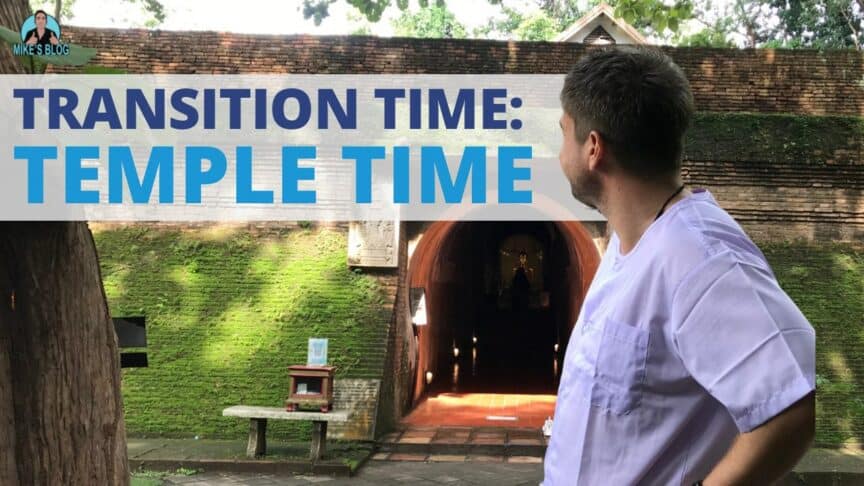Temple, series 2. The last time was in November 2021 when the markets were so hyped up. This time the world is in a different position totally – and we are all evolving and changing.
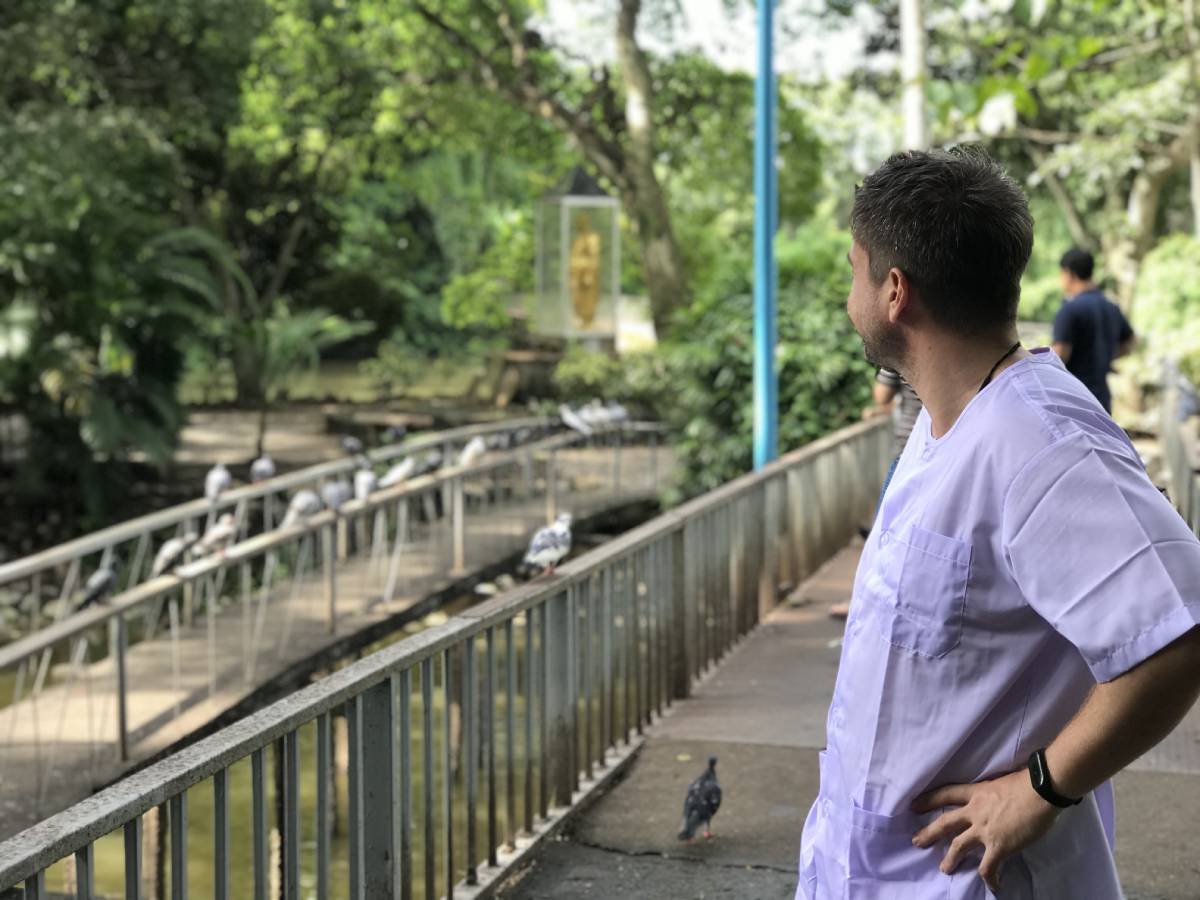
My supportive wife encouraged me to check in to the temple – this time in Chiang Mai, Thailand, to undergo some mindfulness and peace.
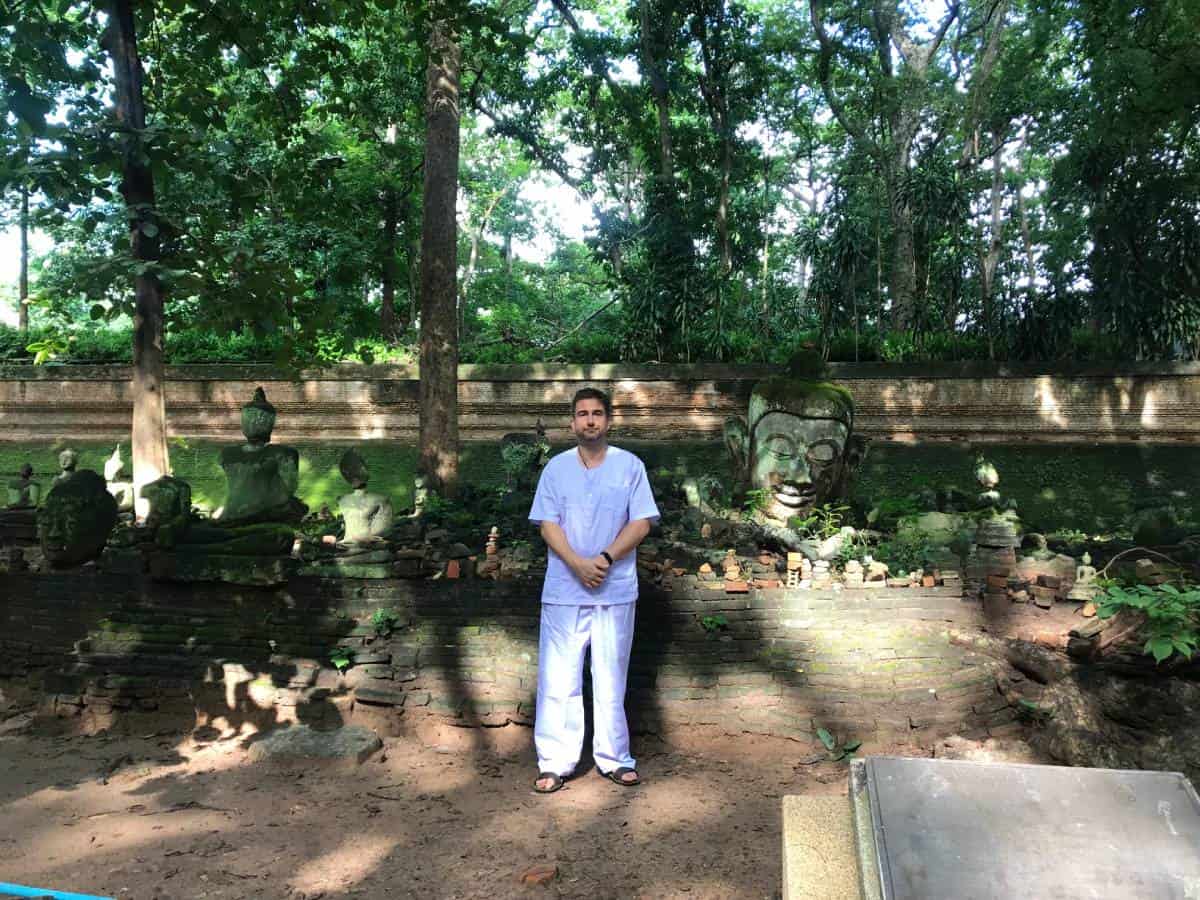
Friday, September 15 to Sunday, September 17 I’m checking in to the temple here, only able to bring.
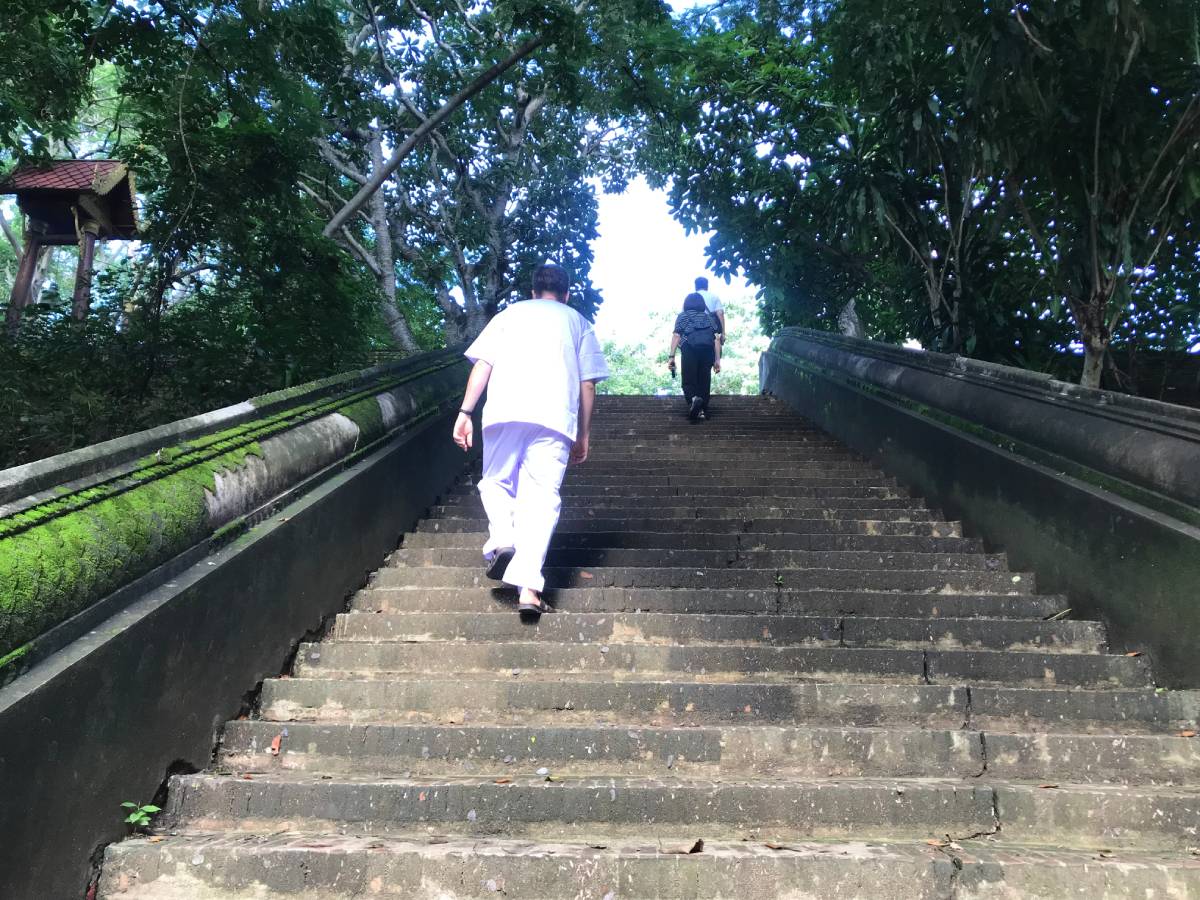
Friday, September 15 to Sunday, September 17 I’m checking in to the temple here, only able to bring.
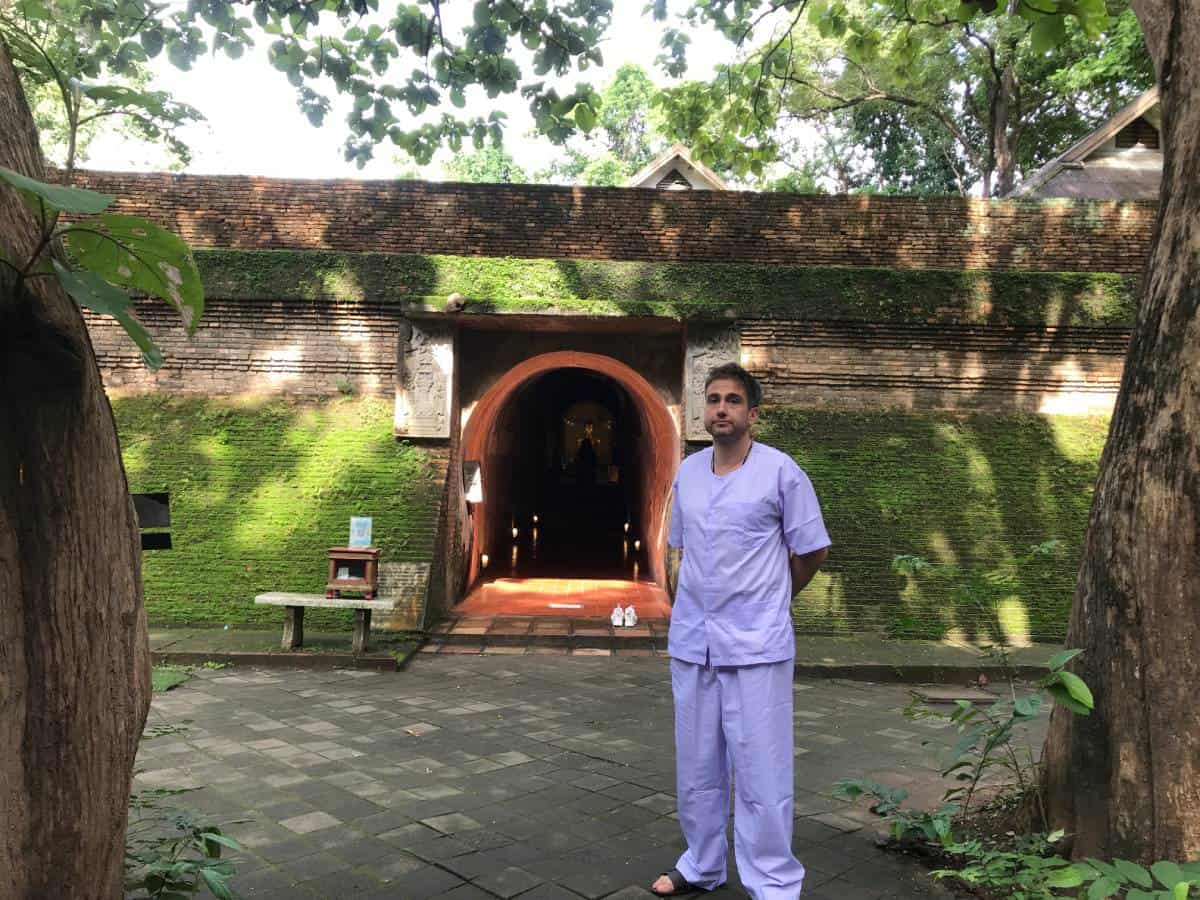
Please bring your belongings such as soap, toothbrush, toothpaste, towel, watch, razor, shaving cream, etc.
With this as the main activity:
1. Buddhism meditation
The center always teaches and supports for Buddhist meditation (Vipassanā meditation) that base on the Four Foundations (Satipaṭṭhāna 4) of mindfulness, in accordance with nature.
2. Buddhism preaching
The center always preaches and explains all about Buddhism [Dhamma] for Thais and foreigners.
With the daily agenda as follows:
Daily routine
Morning
4:30 a.m. Wake up/do personal activities (bell signal – wake up 30 minutes before)
5:00 a.m. – 6:30 a.m. Morning prayer/listening to Dhamma/practicing Dhamma. ( Self-Training after instruction guided)
6:30 a.m. – 7:00 a.m. Merit making/cleaning
7:30 a.m. – 8:30 a.m. Eat breakfast (bell signal – warning 15 minutes before)
9:30 a.m. – 11:00 a.m. Practice Dhamma** and receive precepts (newcomers)
11:00 a.m. – 12:00 p.m. Eat lunch (bell signal – warning 15 minutes before)
12.00 – 14.00 relax at your leisure.
Afternoon
2:00 p.m. – 4:00 p.m. Dhamma practice
4:00 p.m. – 5:00 p.m. Merit making/cleaning
5:00 p.m. – 6:00 p.m. Rest/do personal activities
Evening
6:30 p.m. – 8:30 p.m. Evening prayers/listening to Dhamma/practicing Dhamma (bell signal – warning 15 minutes before)
9:30 p.m. Rest and go to bed.
See you on the other side & Join our GFAVIP member call Sept 20
Will update this post once ready from the post-temple experience. And host a private member call for GFAVIP + CBS2023 confirmed ticket holders
Wednesday, Sept 20 at 8 pm Hong Kong time
Post Temple Experience
Much needed 3 days “digital detox” or temple visit. Walking around the tourist area of the temple and a “foreigner” (no idea maybe American) asked me directions and then asked if I was staying in a hospital.
Lol, I guess this is some variation of a mental hospital in Asia?
The idea of “mental hospital” sounds negative – but we all need a mental break. Felt so great to not look at a phone or laptop screen for 3 days.
This temple experience was much different from my first – which was in Shenzhen China in November 2021 . This was a “meditation center” inside of a Chiang Mai, Thailand temple (Wat Umong, or Tunnel Temple).
Daily Agenda
This is the daily agenda of the meditators, we talked about earlier – but it was about half meditating, half cleaning and “free time”.
During the meditation sessions, I tried so hard to do a solid 1 hour sitting meditation. Those who know the sitting position during meditation know it is cross legged. While my back and legs were in pain, I tried so hard to realize I am not my body. My body is a suffering capsule of my spirit. As my mind wandered about the pain, I would focus on the breath. As my mind wandered about financial pressure, about business pressure, about family pressure, about friend pressure – I would look at that thought and try to identify it as:
- Consciousness (all are)
- Emotional / Mental State
- Memories
- Feelings
- Physical body
The books helped. Each of these 5 points above make up our human body and form. But we are not those 5 aggregates.
Reading Meditation Books – Peace of Mind / Wisdom (Vipassana)
Inside on of the meditation halls was a table of books with a note (in English, Chinese, and Thai) saying “free books”.
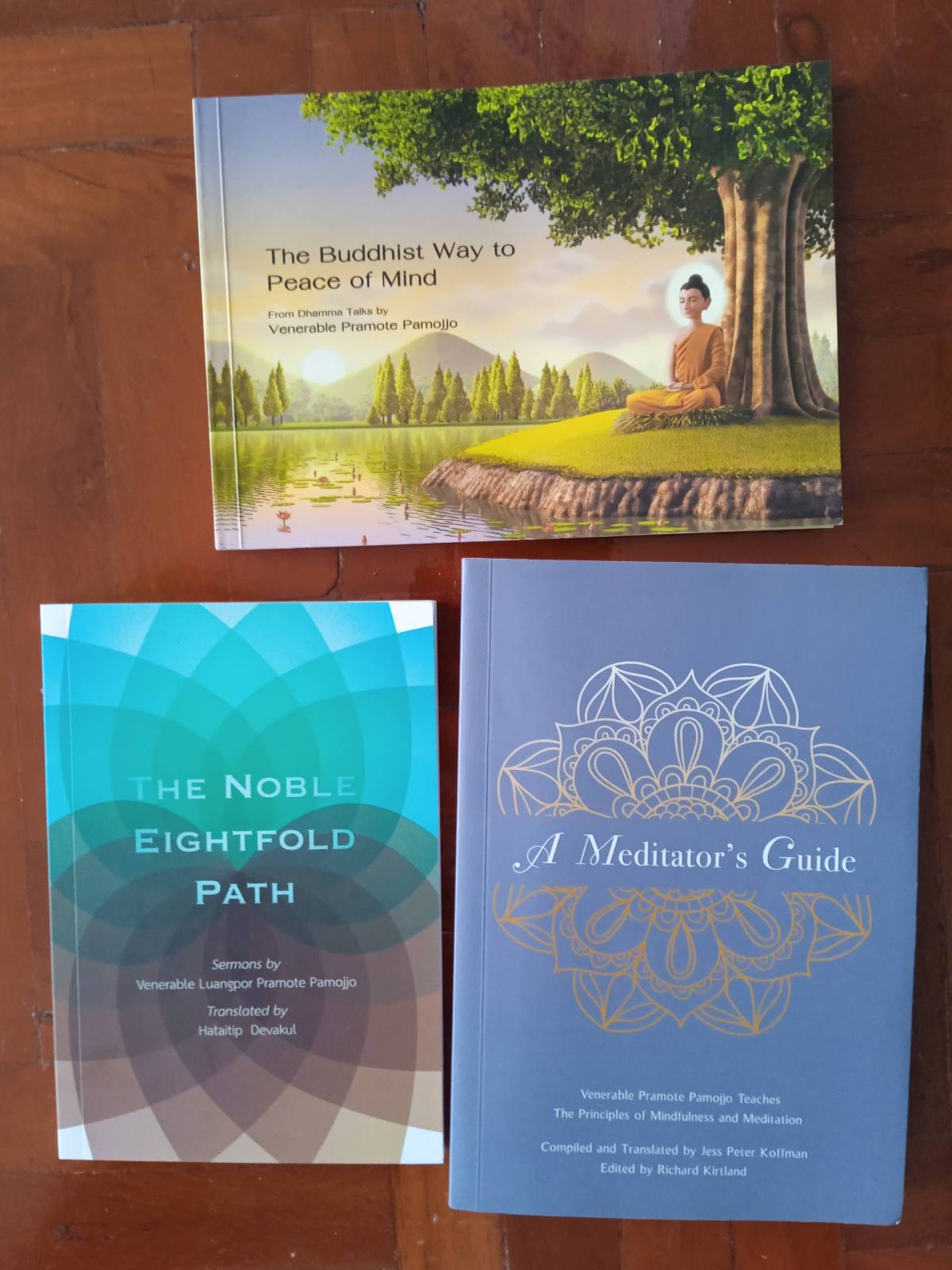
Many more books than one could read in a month, some were in English / Thai / Chinese or a mix of multiple languages. I was able to pick out 2 with a third on the way.
The Buddhist Way To a Peace of Mind, fro Dhamma talks by Venerable Pramote Pamojjo
And
A Meditator’s Guide – Venerable Pramote Pamojjo teachers The Principles of Mindfulness and Meditation, compiled and translated by Jess Peter Koffman, Edited by Richard Kirtland.
While I do recommend you read these on your own, some of the highlights
- You are not your body, and you are not even your mind. You need to look at yourself – both your mind and body – from a third party perspective. You need to analyze your feelings, thoughts, memories as a separate thing. Almost like a spirit – and your body and mind are simply tools in the physical world. They are suffering on this Earth. And you need to accept that life is meant to endure suffering. From birth, to growth, to pain and aging, to death.
- Meditation is not forced, and it is not about forcing focus or anything. Meditation is about observing. It is seeing yourself as a separate part of your mind and body, and you are watching how it behaves. What are you thinking. Why are you thinking that – is it a memory, an emotional state, a feeling, a physical thing. And then once you are able to see these and identify them – you let them go and go back to your breath or your focus point. And then another thought will come – but do not get angry, do not try to force them away. It is about being in a middle path – the balance of the thoughts and then the analyzing and then going back to the breath.
A lot more to it than this – but these are 2 main points I learned from the books.
Did 4+ hours of meditation each day
The monk taught me how to do different types of meditation, also fixing my sitting position meditation. There is also simply standing meditation, walking meditation, and even sleeping meditation.
He said these are so we can meditation throughout our business layman’s work day. If we are feeling angry or stressed, we can simply stand up and put our hands together and meditation for a minute. To analyze our thought, our feeling, our memories – and then to realize we are not these thoughts and feelings.
Inside the meditation center during the scheduled sessions, I forced myself to do a full 1 solid hour of sitting meditation. Again as said above it was painful both in my legs and lower back, but I would not stand up. I did sneak in a stretching of my right leg by extending it and leaning back – but never getting up. The pain hurt, but it was powerful when I was able to meditate and forget I was even in pain. Looking at pain as simple a physical feeling in a body that is a capsule for you on Earth and this body is not you. Powerful.
Between the meditation and other sessions, I would walk around the temple. In my meditation clothes, I would walk through the tunnel temple. I would walk around the pagoda in circles (one morning I walked for 30 minutes in a circle around the pagoda). There was also a fish pond and pigeon army that was where tourists would feed them and create frenzies.
I would sit and watch, and read my book. Drink warm water (I cut off caffeine). Notice a flock of pigeons flying to the next tourist to get their food.
Some of the other meditators and I noticed a dying pigeon. We saw it die in front of us, and we helped to bury it. One of the female meditators bust out in tears, but another female meditator comforted her that death is part of life and it is a cycle. And the pigeon no longer has that physical pain it was in.
And this is the main point – we are in a human body enduring both physical and mental pain. But we endure it to find our purpose, what we are here to do and influence.
And that is much more clear for me now.
